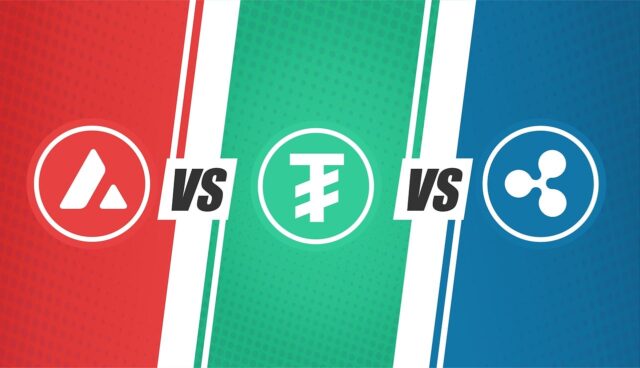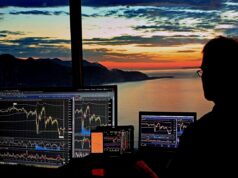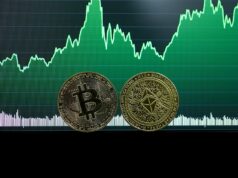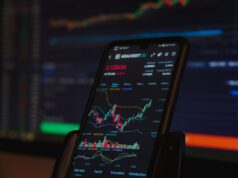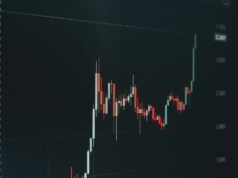In the bustling world of trading platforms, where fortunes can be made and lost in the blink of an eye, the distinction between market orders and limit orders emerges as a fundamental pillar of comprehension for every trader. These two types of orders represent not just choices in execution but embody different philosophies regarding risk, timing, and strategy. Grasping their differences is essential for navigating the often tumultuous waters of financial exchanges, where the ebb and flow of prices dictate the rhythm of countless transactions.
Market orders, with their straightforward nature, allow traders to buy or sell assets at the best available price, embracing immediacy over precision. In contrast, limit orders introduce a layer of deliberation, specifying a price point that reflects a trader’s ideal conditions for entering or exiting a position. This distinction is not merely academic; it speaks to a trader’s temperament and objectives. Comprehending when to deploy each type can mean the difference between seizing an opportunity or missing it entirely.
As we delve deeper into this analysis, we will explore the nuances of these orders within the framework of trading platforms. We will consider how they operate in real-time scenarios and unpack the emotional intelligence required to wield them effectively. The journey through understanding market and limit orders promises insights that can transform a fledgling trader into a seasoned participant in this vibrant arena. Each choice made on these exchanges reverberates beyond mere numbers; it shapes our financial destinies and reflects our approaches to risk and reward.
Market Orders Explained
In the intricate world of trading, where decisions are made in the blink of an eye, understanding the nature of market orders becomes paramount. These orders, simple yet profound, are the lifeblood of exchanges. When a trader places a market order, they do so with the intent to buy or sell an asset immediately at the best available price. This immediacy provides a sense of security, a reassurance that one’s wishes will be fulfilled without delay. Yet, therein lies a subtlety that every trader must grasp–while this type of order guarantees execution, it does not guarantee price.
Comprehending the distinction between market orders and limit orders is akin to navigating through the labyrinthine corridors of a grand old mansion. Limit orders present a contrasting approach; they allow traders to specify the price at which they wish to buy or sell. In this way, limit orders serve as a protective barrier against the unpredictable tides of market volatility. They embody a strategy rooted in patience and precision, ensuring that traders engage only when conditions are favorable. Thus, while market orders rush forward into the fray, limit orders stand back with quiet confidence, waiting for the right moment.
On various trading platforms, traders encounter these two types of orders side by side–a juxtaposition that invites contemplation. The decision to choose one over the other often hinges on individual circumstances and goals. For those who thrive in fast-paced environments and are willing to accept slight fluctuations in price for immediate execution, market orders may seem like a beacon of opportunity. Conversely, for those who favor caution and meticulous planning, limit orders create a canvas upon which they can paint their trading strategies with greater care.
Distinguishing between these orders requires not only knowledge but also an appreciation for the nuances of trading psychology. Traders must consider their risk tolerance and objectives carefully when choosing between market and limit orders. The fast-moving nature of exchanges can evoke emotions–fear, excitement, impatience–that cloud judgment. Thus, a deep comprehension of these differences empowers traders to navigate the markets with clarity and confidence.
Ultimately, grasping the differences between market and limit orders enriches one’s trading experience. It transforms mere transactions into meaningful interactions with the marketplace. As traders learn to wield these tools with intention–understanding when to dive in and when to hold back–they cultivate a deeper relationship with their craft. In this dance between urgency and patience lies the essence of successful trading; for it is not merely about executing orders but rather about mastering oneself amidst the ebb and flow of financial currents.
Understanding Market Orders vs Limit Orders on Exchanges
In the vast and often turbulent sea of trading, comprehension of the instruments at one’s disposal can spell the difference between success and failure. Among these instruments, limit orders stand as sentinels of precision, allowing traders to dictate the terms of their transactions. A limit order is an instruction to buy or sell an asset at a specified price or better, a beacon guiding the trader through the stormy waters of market fluctuations. This approach provides a sense of control, enabling one to engage with the market not merely as a passive participant but as an active strategist.
Grasping the differences between market orders and limit orders becomes essential for anyone navigating these exchanges. Market orders, in contrast, are executed immediately at the current market price, often leaving traders at the mercy of fleeting moments and volatile shifts. While they promise speed, they do not guarantee price; a trader may find themselves caught in a sudden surge or drop that could have been avoided with more deliberate planning. Thus, distinguishing these two types of orders reveals not just preferences in trading style but fundamental philosophies about risk management and decision-making.
Comprehending market orders and limit orders involves delving into the psyche of trading itself. It is about understanding when to seize an opportunity with urgency and when to wait patiently for the right moment to materialize. The distinction lies in one’s approach to uncertainty–whether one seeks to embrace it with swift action or prefers to navigate its ebbs and flows with calculated restraint. Each order type offers unique advantages and drawbacks that reflect the trader’s temperament and strategy, shaping their journey through the labyrinthine corridors of financial exchanges.
On trading platforms, this knowledge transforms into power. The choice between market and limit orders is not merely a technical decision; it encapsulates a trader’s philosophy toward their investments. In this world where every tick on the chart tells a story, understanding these differences can illuminate paths previously obscured by doubt. As traders embark on their quests, armed with this comprehension, they become not just participants but artisans of their financial destinies, crafting outcomes with careful choice and thoughtful consideration.
Understanding the Distinction Between Market and Limit Orders
In the vast landscape of exchanges, where the ebb and flow of digital currencies creates a rhythm akin to the tides, traders often find themselves at a crossroads. Here, the comprehension of order types becomes pivotal, as it shapes strategies and influences outcomes. The simple act of distinguishing between market orders and limit orders can be the difference between seizing an opportunity and watching it slip away into the currents of volatility.
With an understanding that market orders execute immediately at current prices, while limit orders allow one to set a desired price for execution, traders embark on their journeys equipped with knowledge. This distinction is not merely academic; it is a lifeline in the unpredictable waters of trading platforms. As we delve deeper into the intricacies of these orders, grasping their differences reveals not only the mechanics of trading but also the very essence of strategy and timing.
- Market Orders: These are executed immediately at the best available price. They offer speed and certainty but can lead to unexpected costs in volatile markets.
- Limit Orders: These allow traders to specify a price at which they wish to buy or sell. While they provide control over entry and exit points, there is no guarantee of execution if the market does not reach those levels.
The careful trader learns to navigate these waters with a steady hand, weighing the immediacy of market orders against the precision of limit orders. Each choice carries its weight, its implications, as trades unfold amidst the shifting landscapes of currency values. In this delicate dance of commerce, comprehending these differences is essential, for they illuminate pathways to success.
As we conclude this exploration into market and limit orders on trading platforms, let us remember that ultimately, it is not merely about making trades; it is about understanding oneself as a trader. The choices made in this realm reflect not just a grasping of concepts but also an embrace of one’s own financial destiny.

